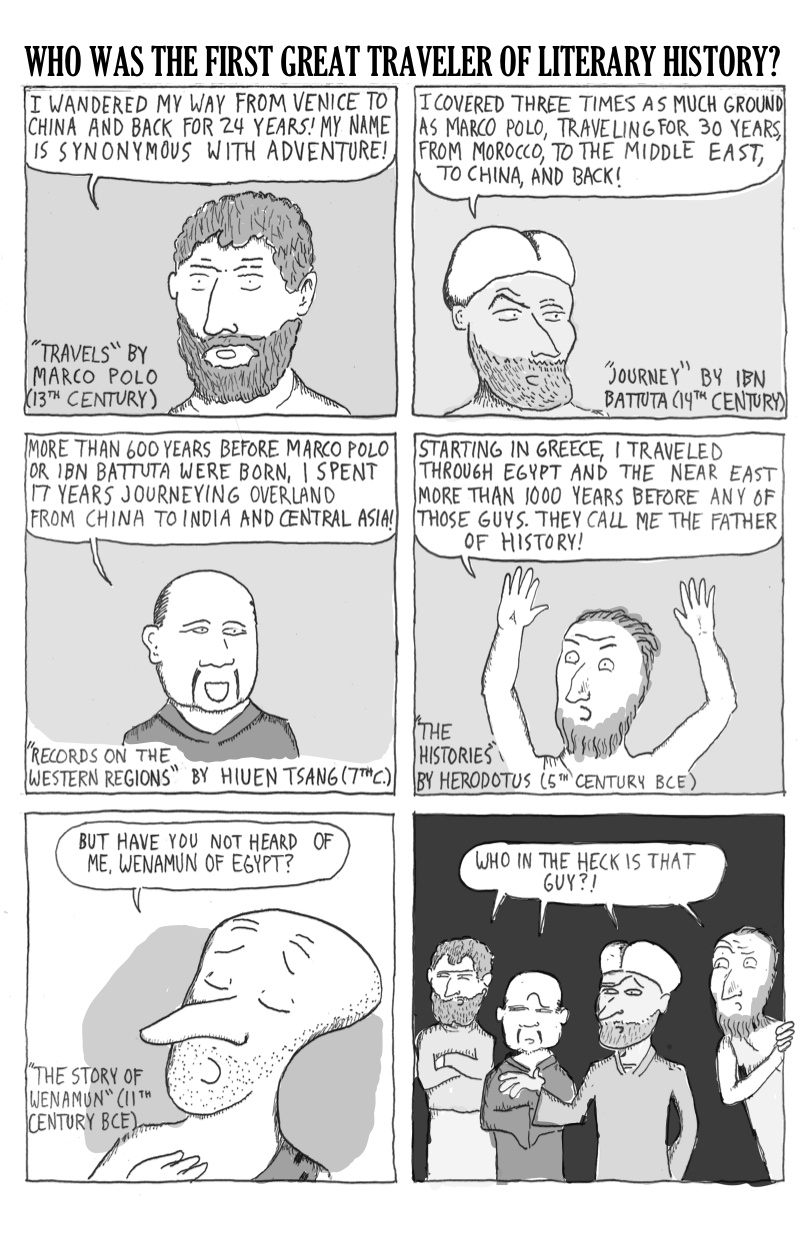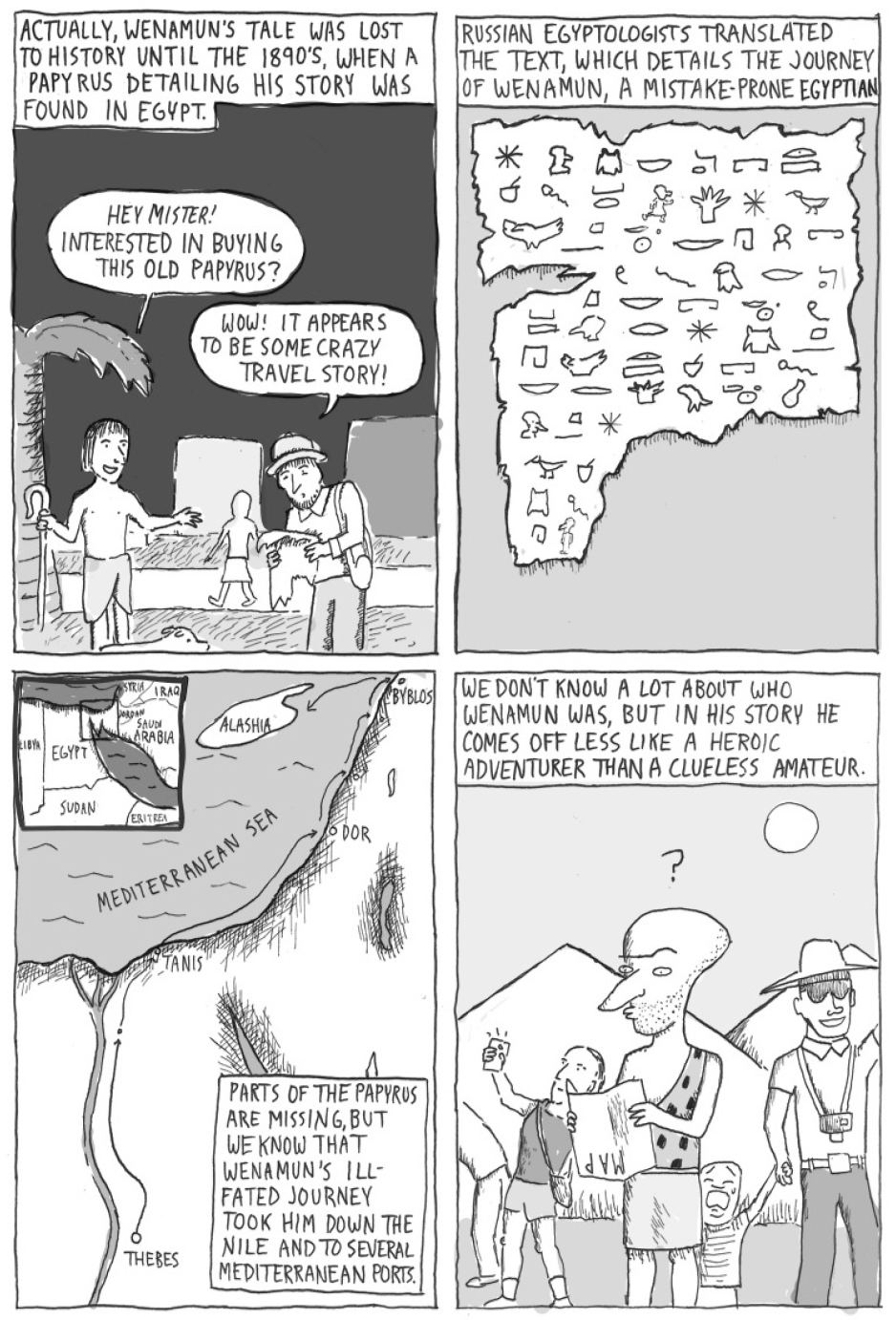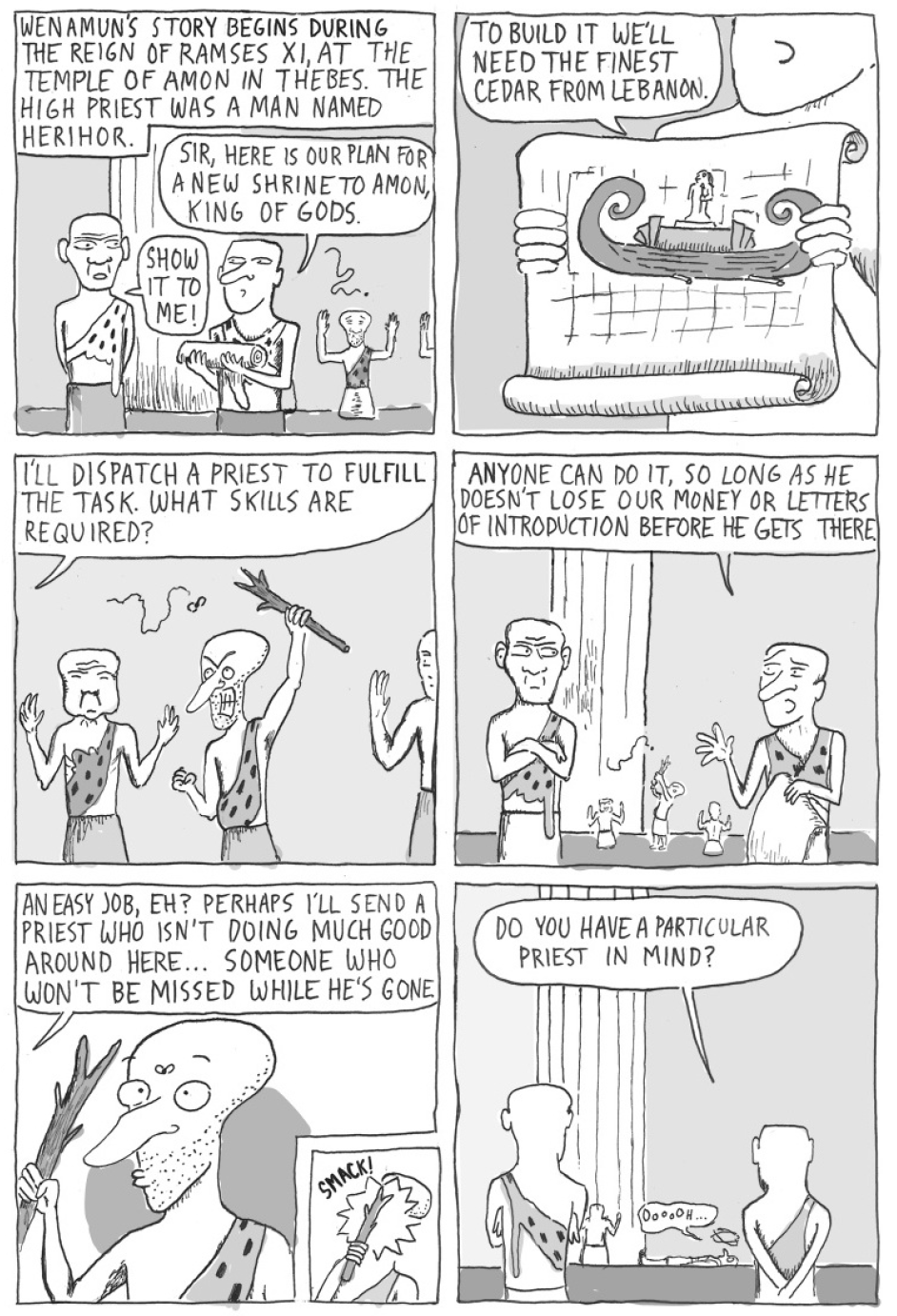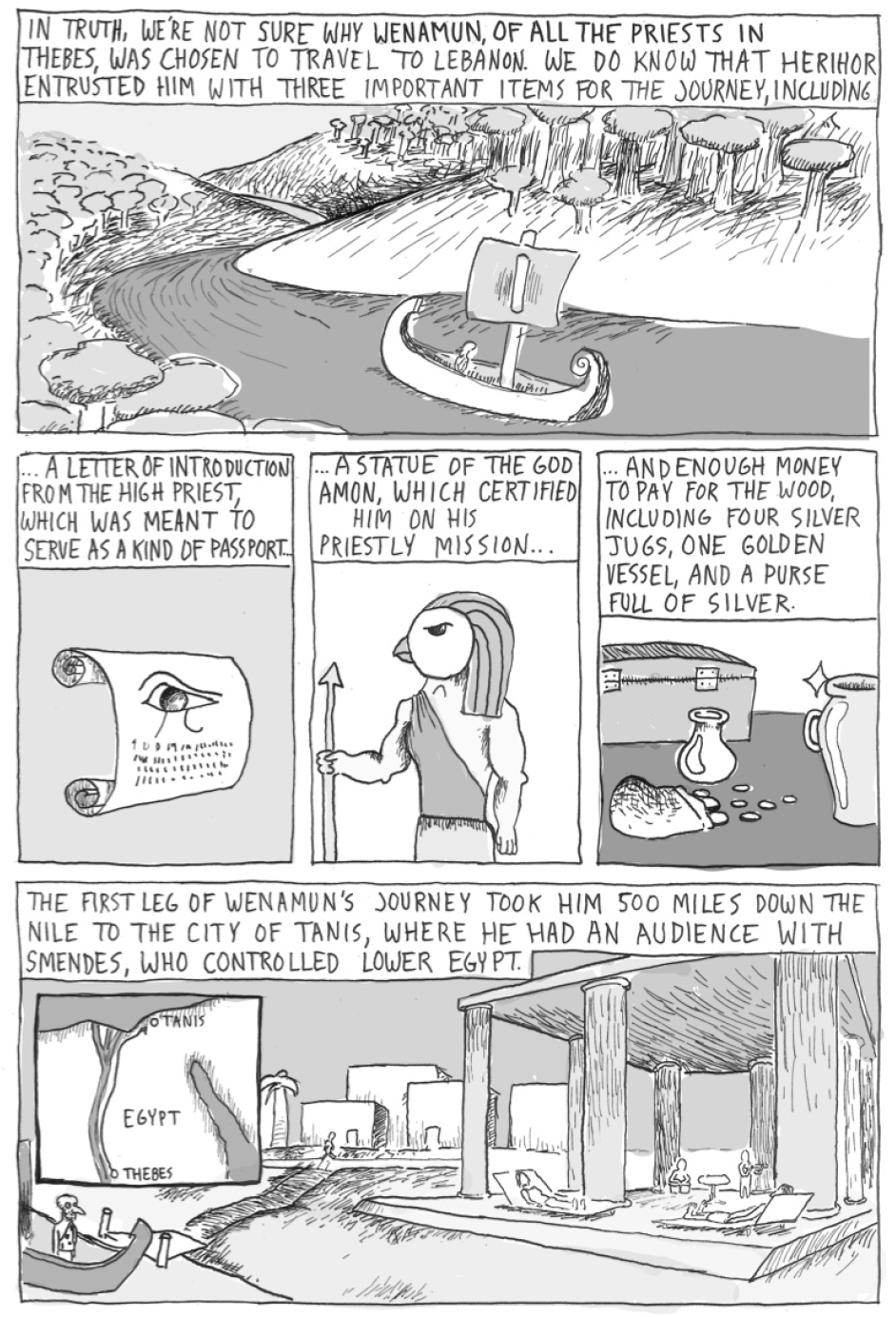Adapted by ROLF POTTS
Illustrated by CEDAR VAN TASSEL
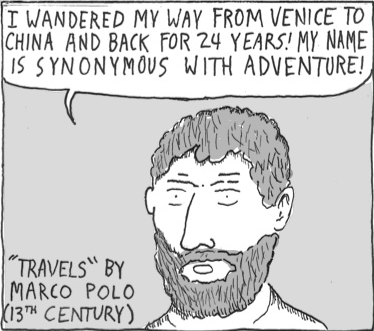
One enticing thing about travel tales from distant centuries is the way they suggest so many more stories that haven’t been told. While we assume that Marco Polo was a pioneer in his journey to the Far East, for example, we learn from his own narrative that he encountered other Europeans – Germans, Lombards, Frenchmen – in the cities of China. Polo’s contemporary, William of Rubruck, traveled across Asia and found Greek doctors, Ukrainian carpenters, and Parisian goldsmiths working in the Mongolian capital of Karakorum. As intriguing as these thirteenth-century accounts of Marco and William are, imagine a rich trove of unknown travelers’ diaries stretching far deeper into antiquity.
In 1890, the discovery of a papyrus in al-Hibah, Egypt, gave us a glimpse into a curious travel tale that predates the likes of Marco Polo by nearly 2500 years. Written in hieratic (a cursive writing system similar to hieroglyphics) in the Late Egyptian language, this tantalizingly incomplete manuscript recounts the journey of a priest named Wenamun, who was sent across the Mediterranean to buy timber in Lebanon at a time when Egyptian power in the region was on the wane. Unlike the characters in more mythic tales of adventure, Wenamun’s journey is not heroic. He is, in his hapless progression of mistakes and misdirections, an anti-hero of sorts – as clueless and arrogant as any culturally oblivious tourist. His tale has come to be called “The Story of Wenamun” – but it is also known, perhaps more aptly, as “The Misadventures of Wenamun.”
I first learned of this old Egyptian travel story while reading Lionel Casson’s Travel in the Ancient World. The comic, modern-seeming textures of Wenamun’s tale made me wonder why, despite my life-long interest in travel literature, I’d never heard of it before. For some reason, perhaps because of its short length (and in part because it was discovered by Russian Egyptologists, whose work was underreported in the Anglophone world), “The Story of Wenamun” isn’t well known outside of scholarly circles. That said, the protagonist’s misadventure is delightfully entertaining, and has a confessional, self-deprecating feel that makes it stand out from other ancient narratives. After reading various translations of the story, I sensed that modern audiences might better appreciate the cadences and twists of this tale if it were retold in more fanciful form – not as a scholarly document, but as a comic book.
This in mind, I transformed the story into graphic narrative with the help of my 14-year-old nephew Cedar, an up-and-coming comics blogger whose teenaged sensibilities lent the right amount of whimsy and impetuousness to the tale’s bumbling anti-hero. Though the story’s assorted characters at times speak in modern-sounding cadences, we have taken great pains to ensure that its plot follows the events recounted on the actual papyrus. What might seem like wacky developments (including the misplaced letters of introduction, the stolen and re-stolen money, and Wenamun’s weeping fit on the beach at Byblos) all come from the original story. Scenes that are based on speculation (i.e. why Wenamun was chosen as an envoy, and what happened to him after Cyprus) are clearly signposted to the reader. In the interest of narrative unity, some of the dialogue is hypothetical, but significant sections (including Beder’s courteous overtures, Zakaar-Baal’s dressing-down of the protagonist, and Wenamun’s homesick lament) are modern-sounding iterations of equivalent language in the source papyrus.
From here I’ll let the comic speak for itself. It begins with a deceptively simple question…
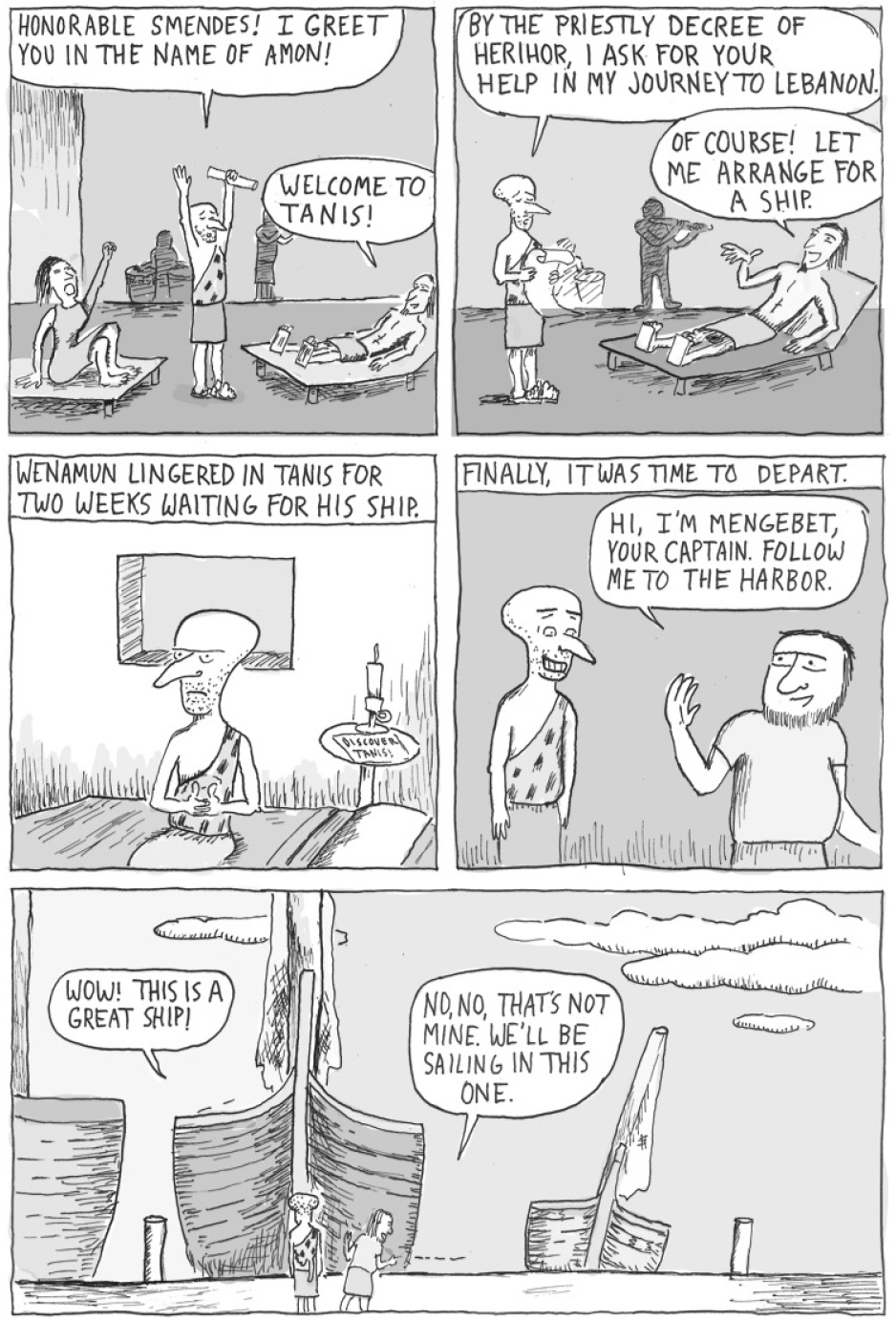
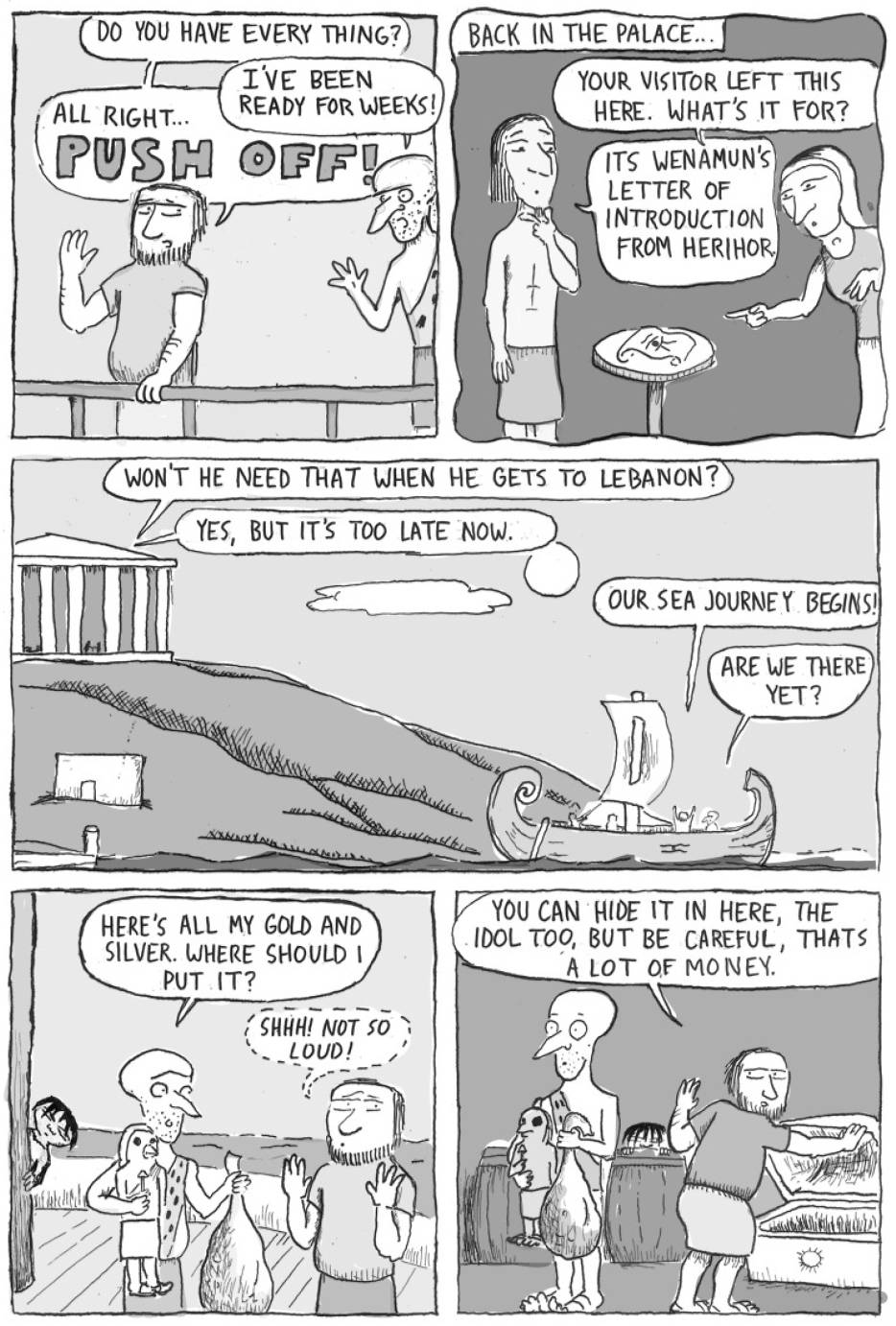
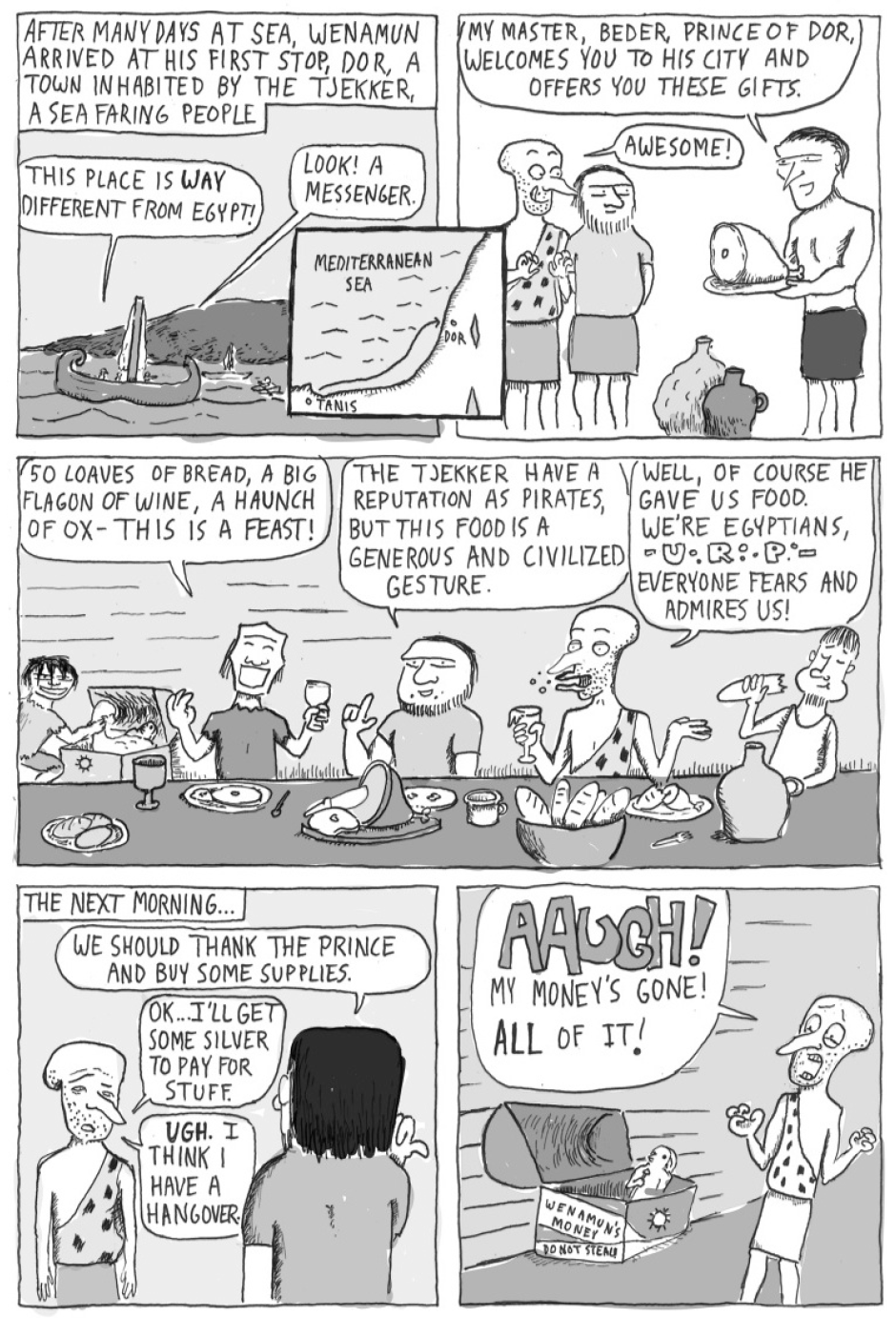
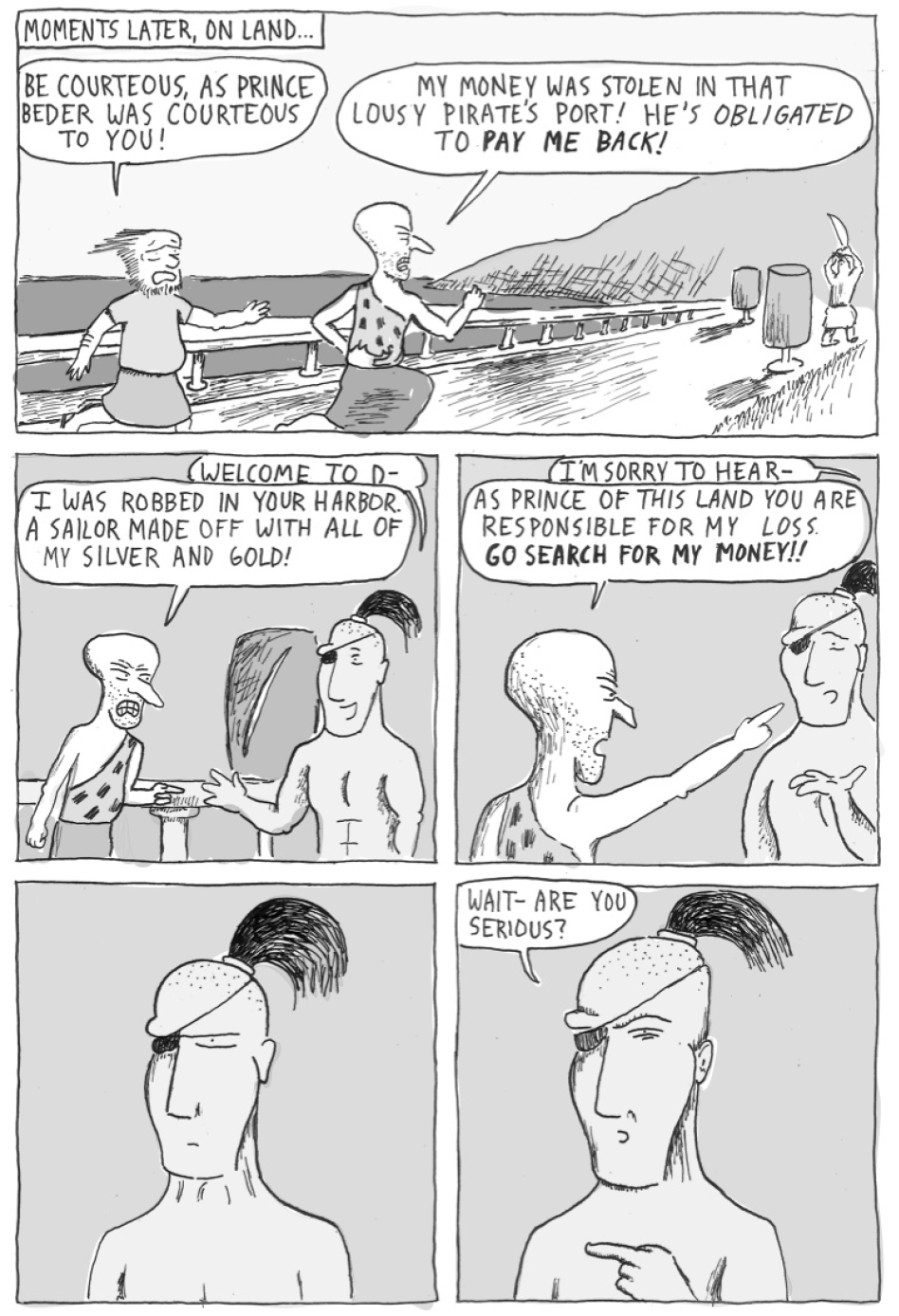
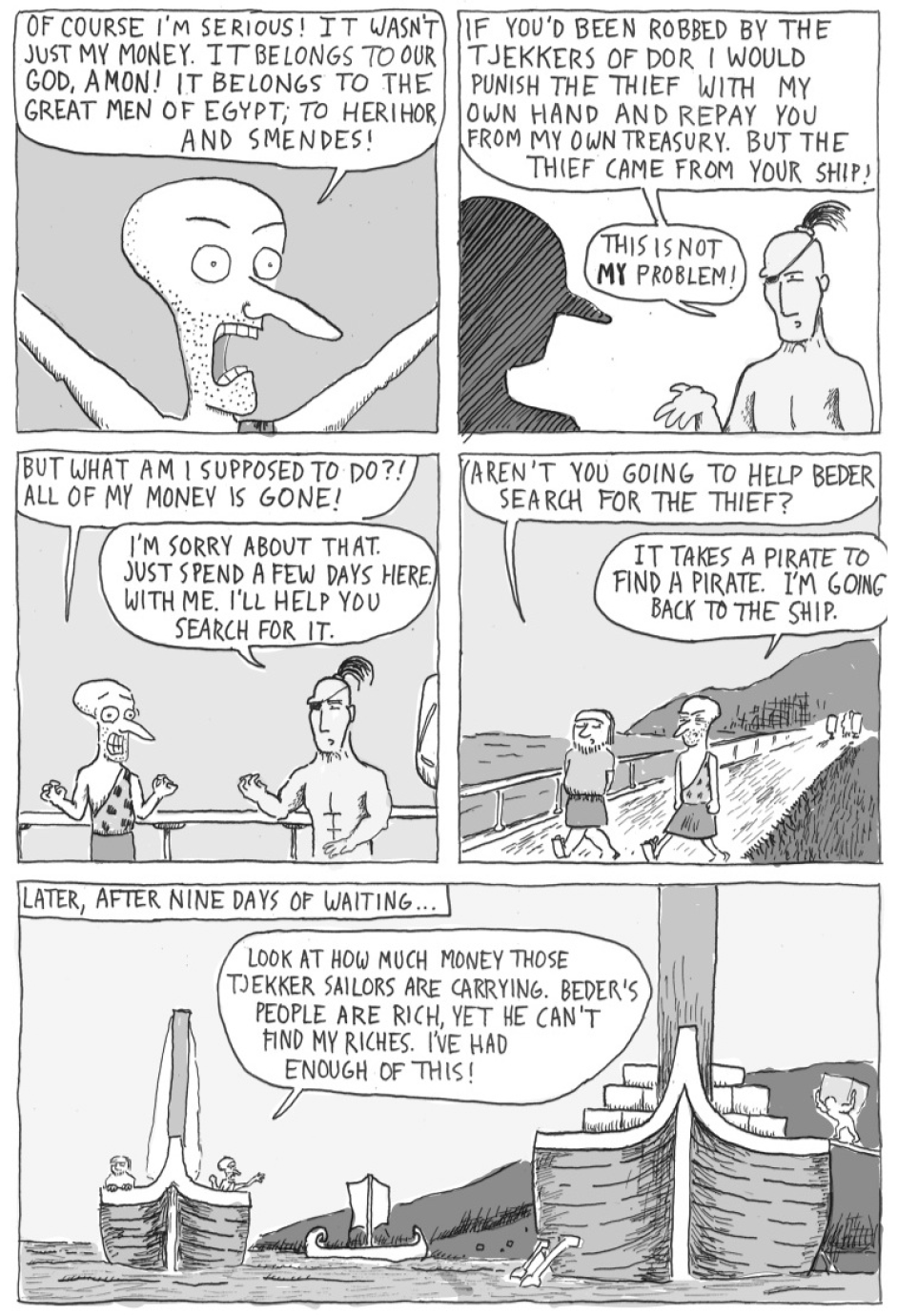
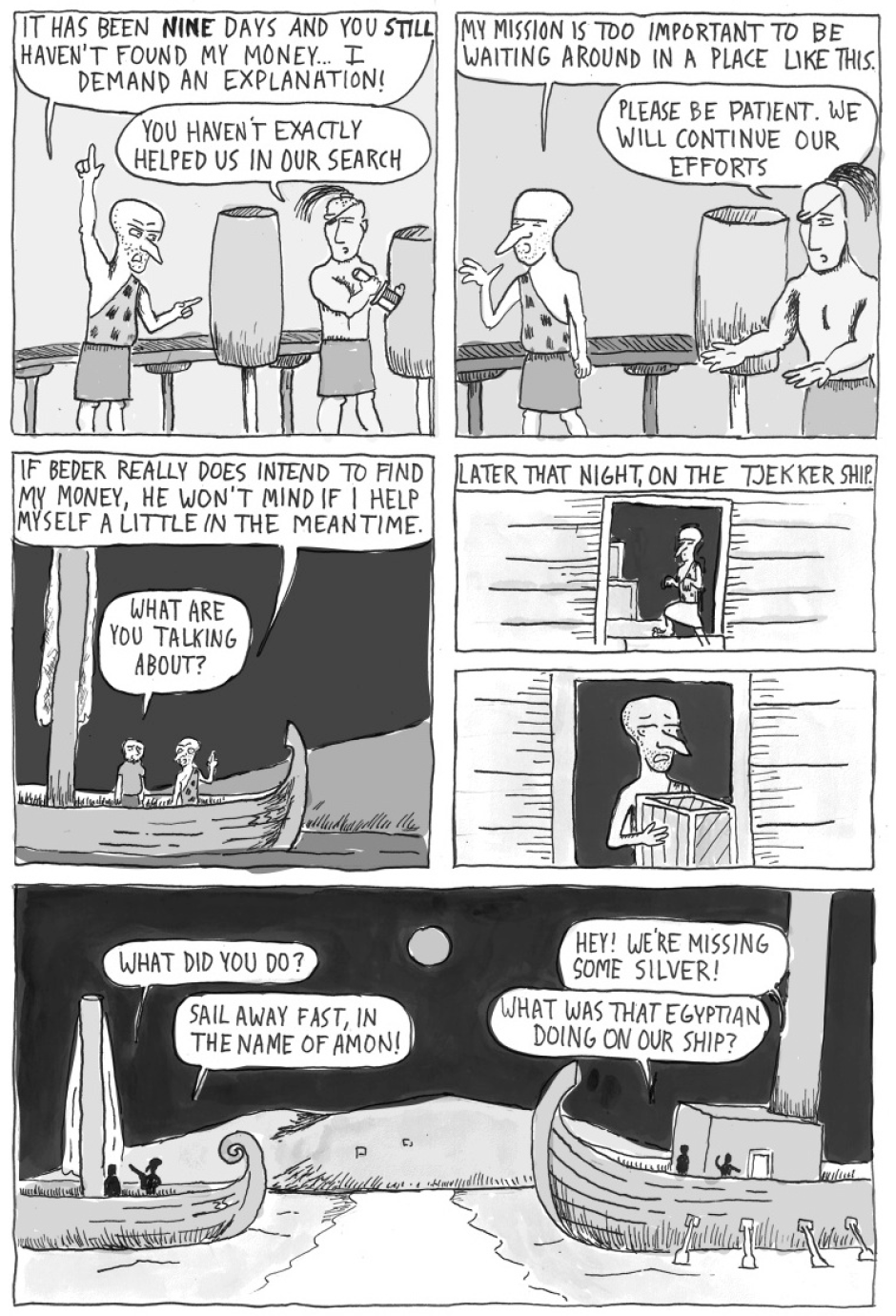
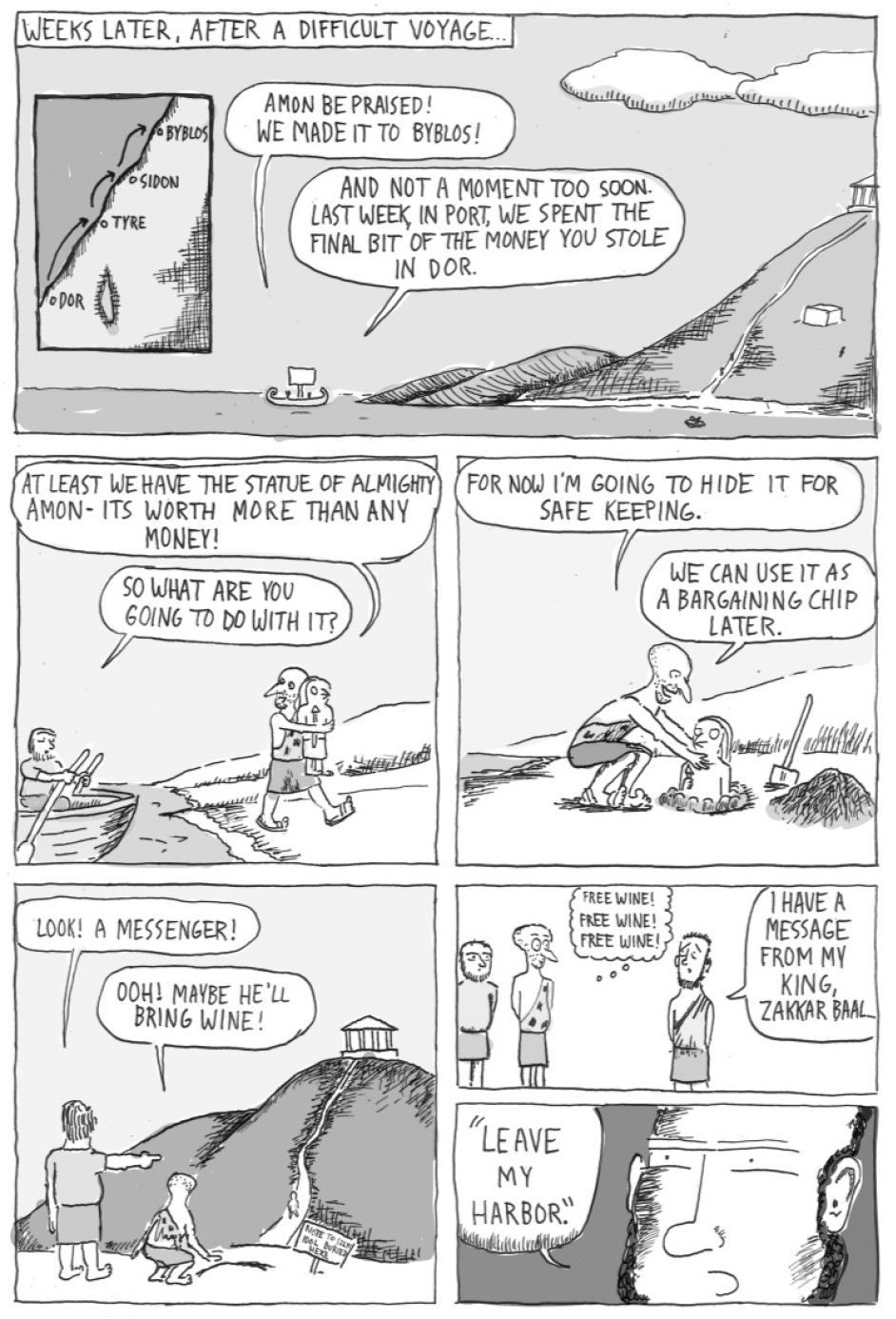
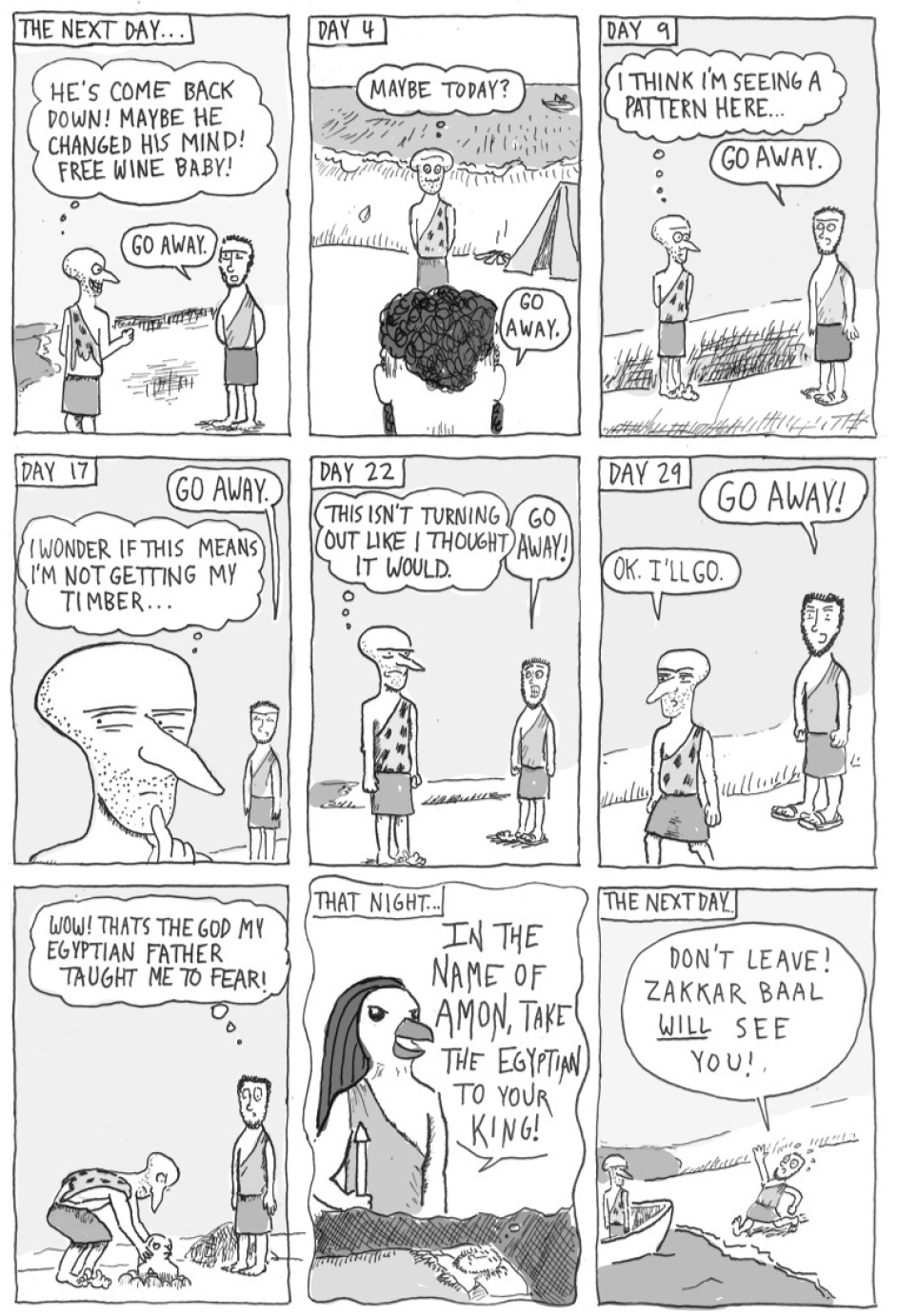
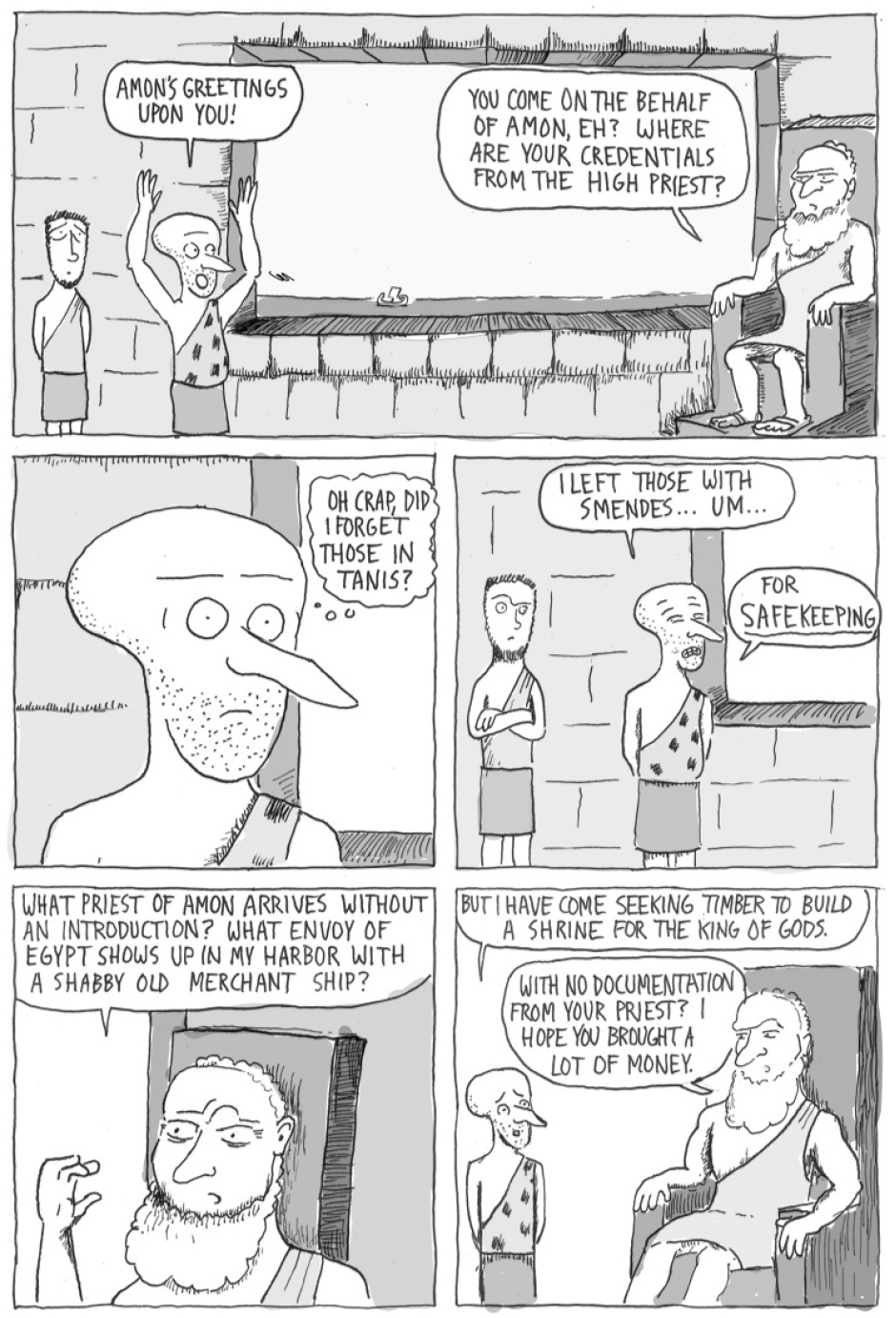
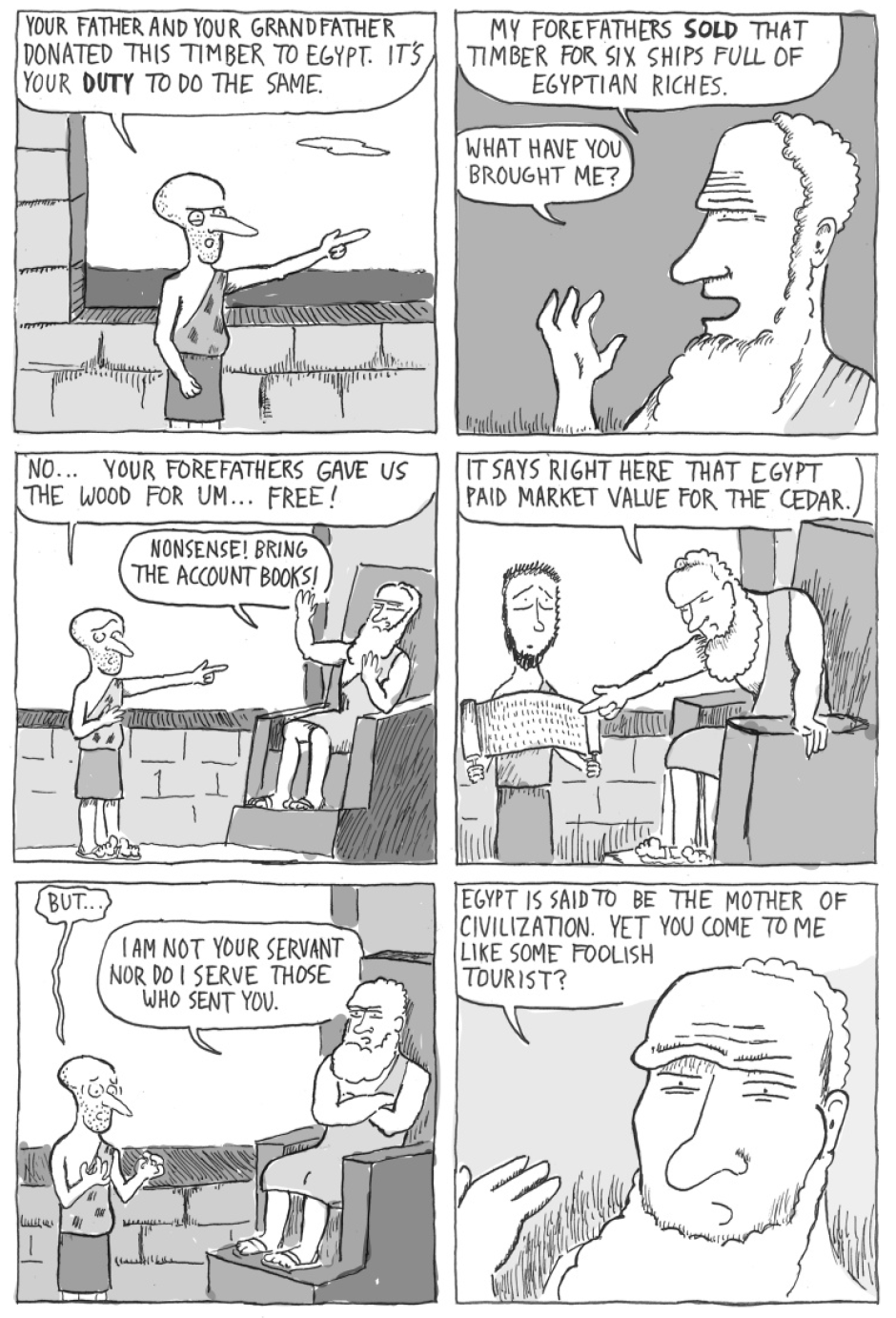
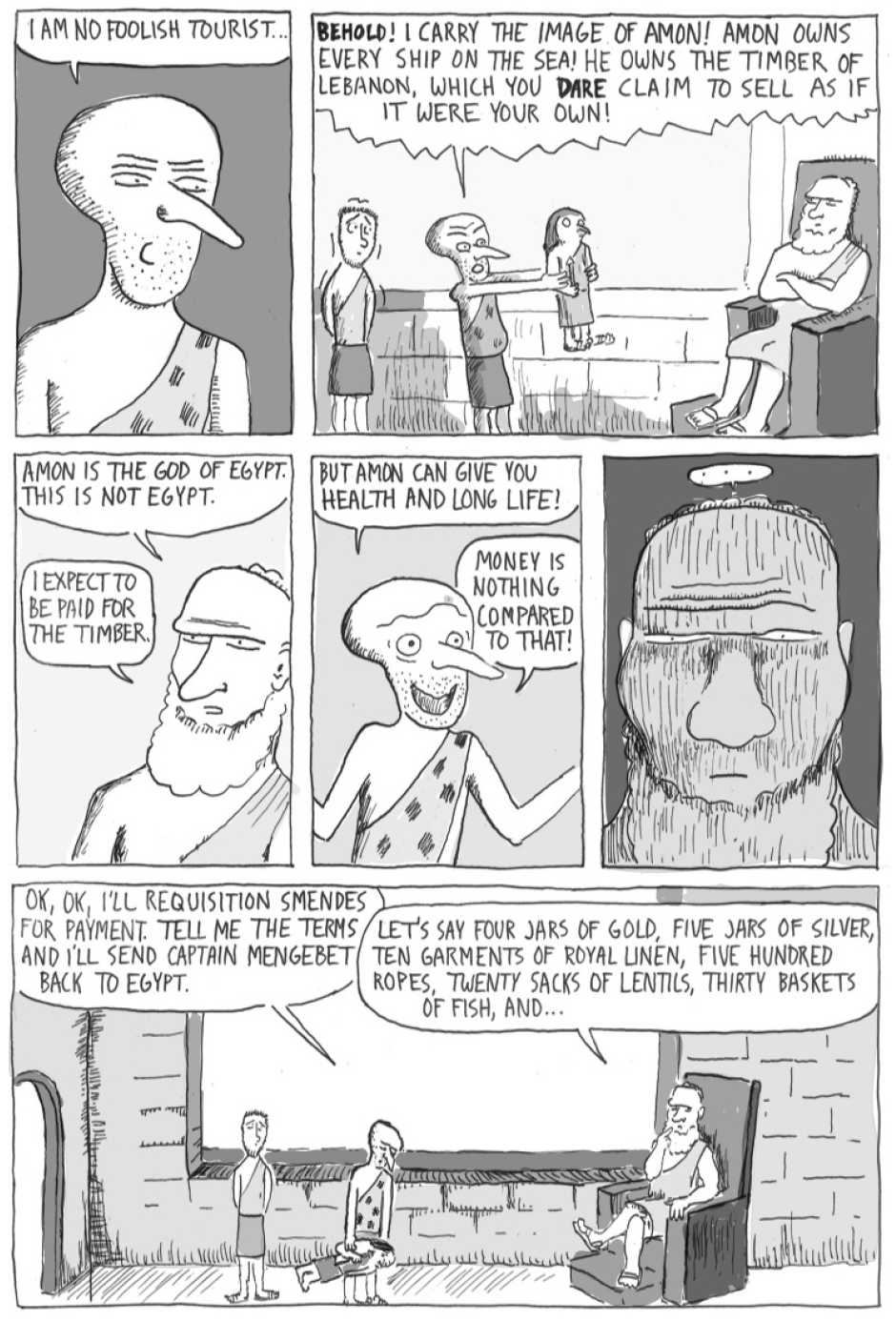
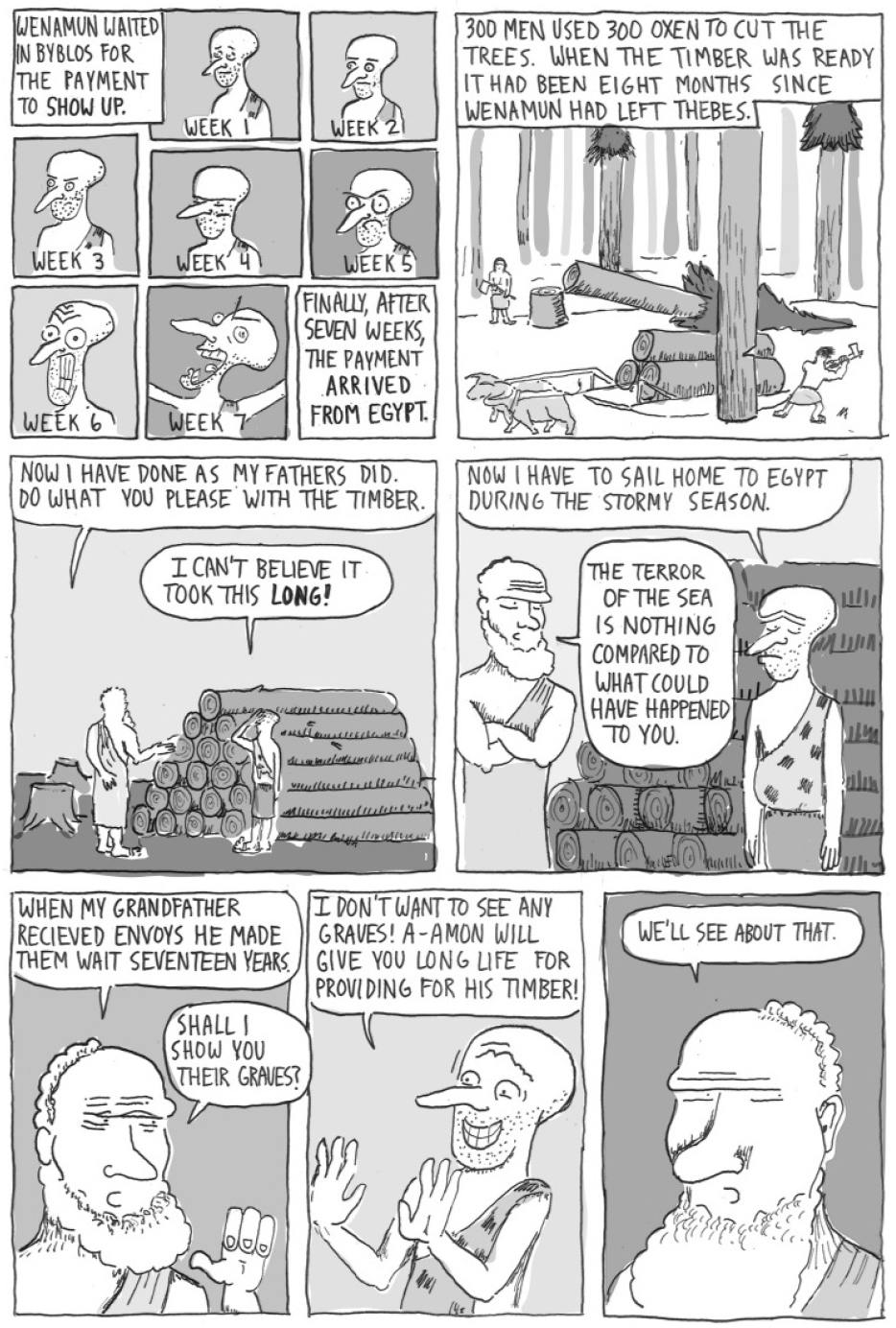
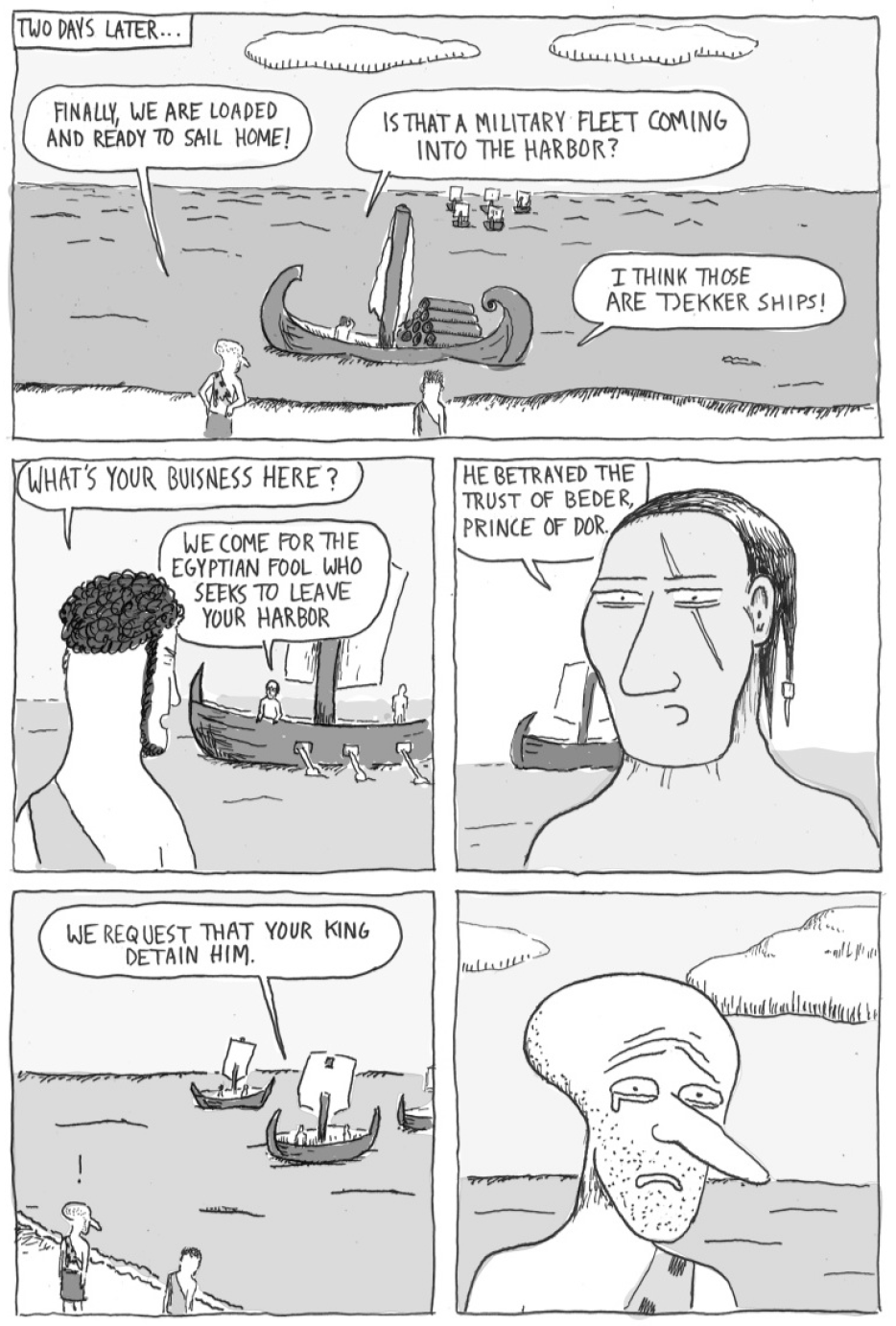

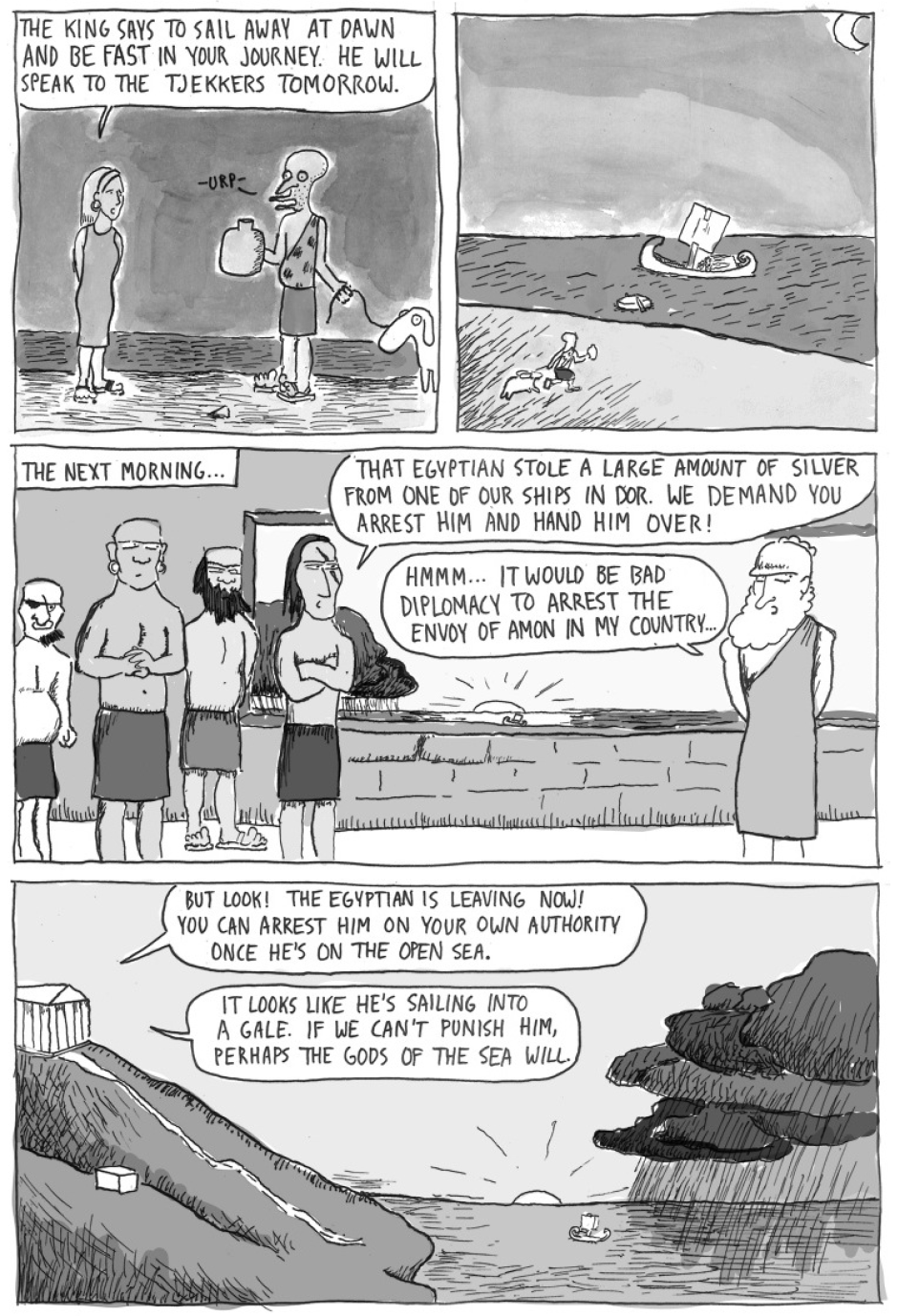
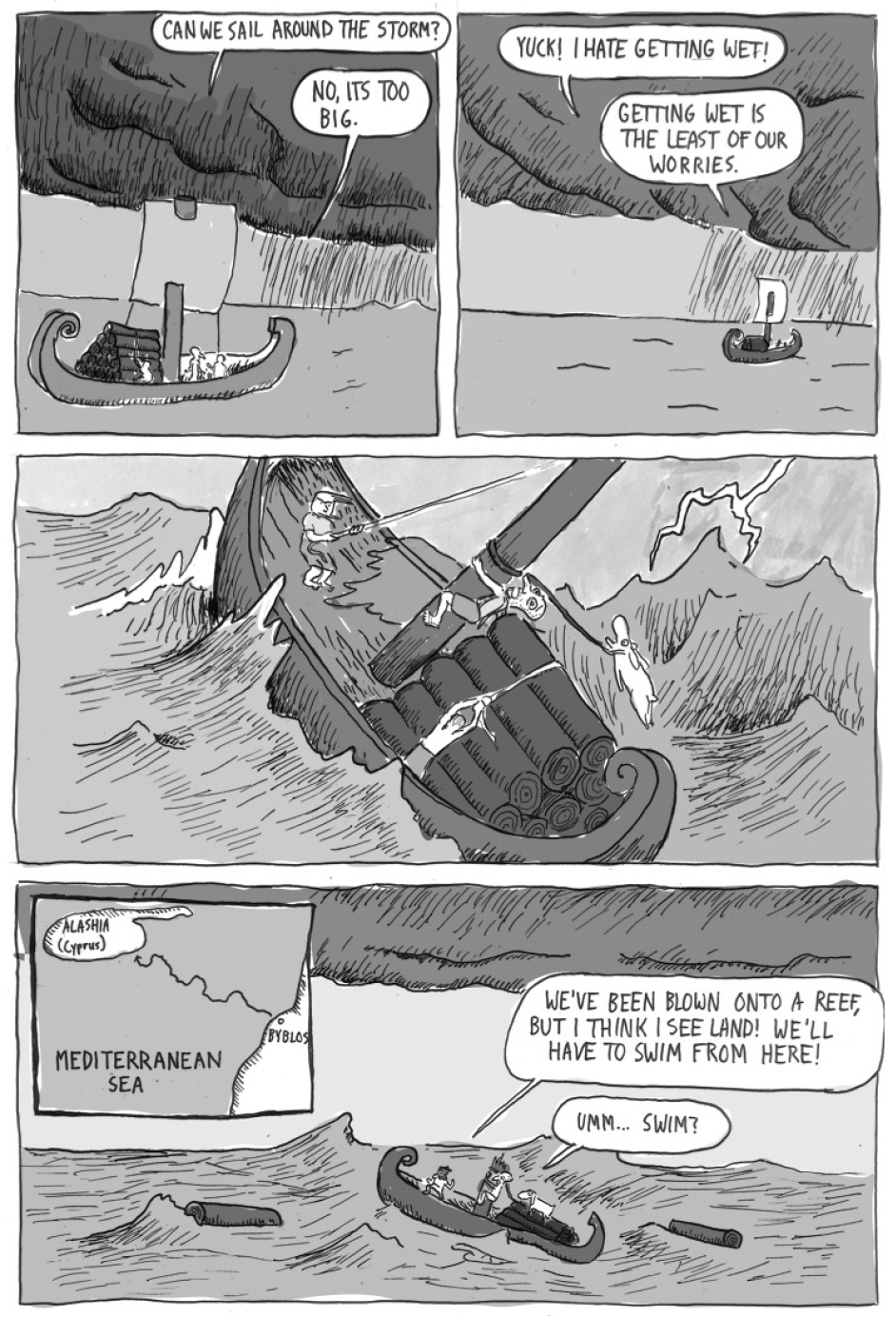
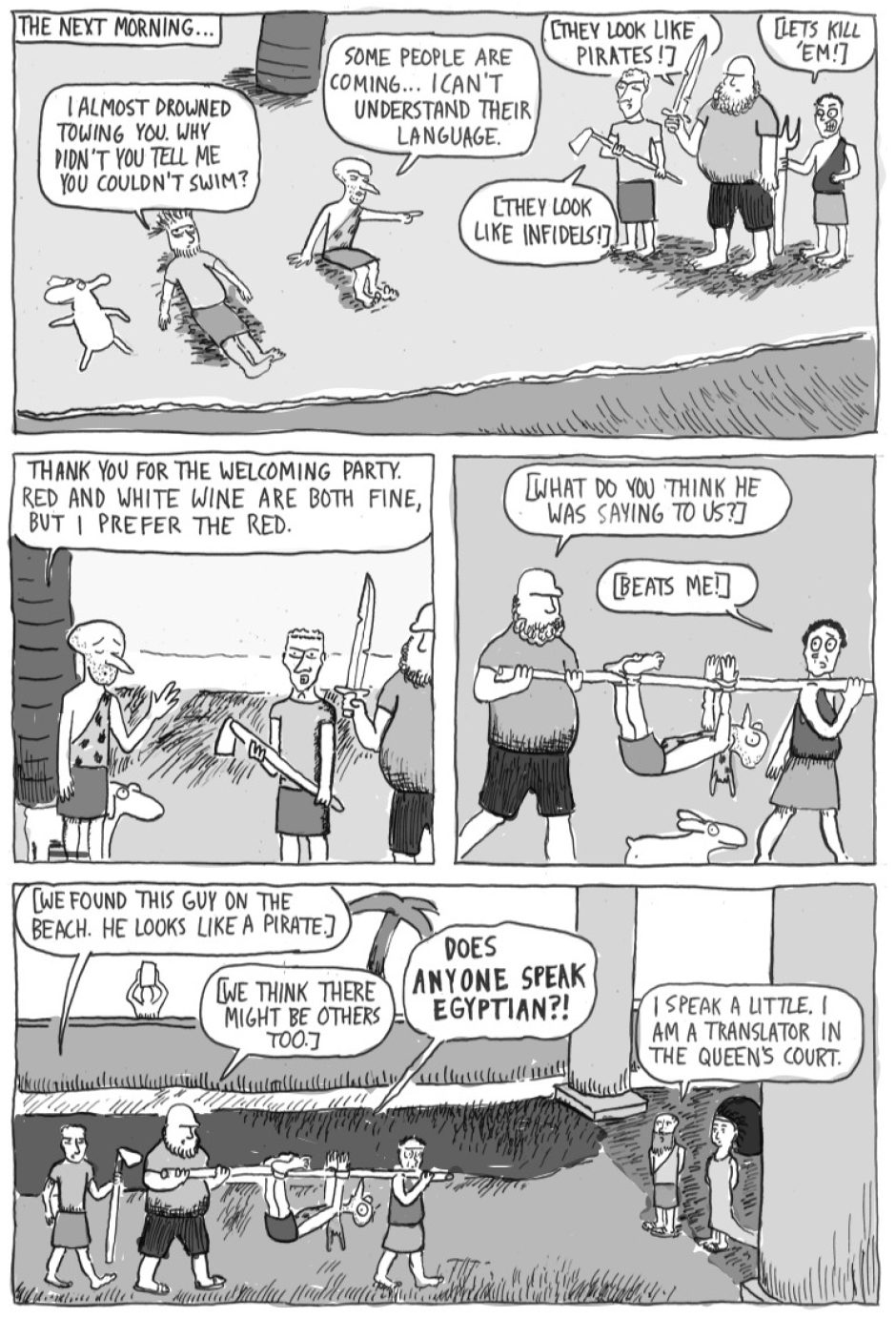
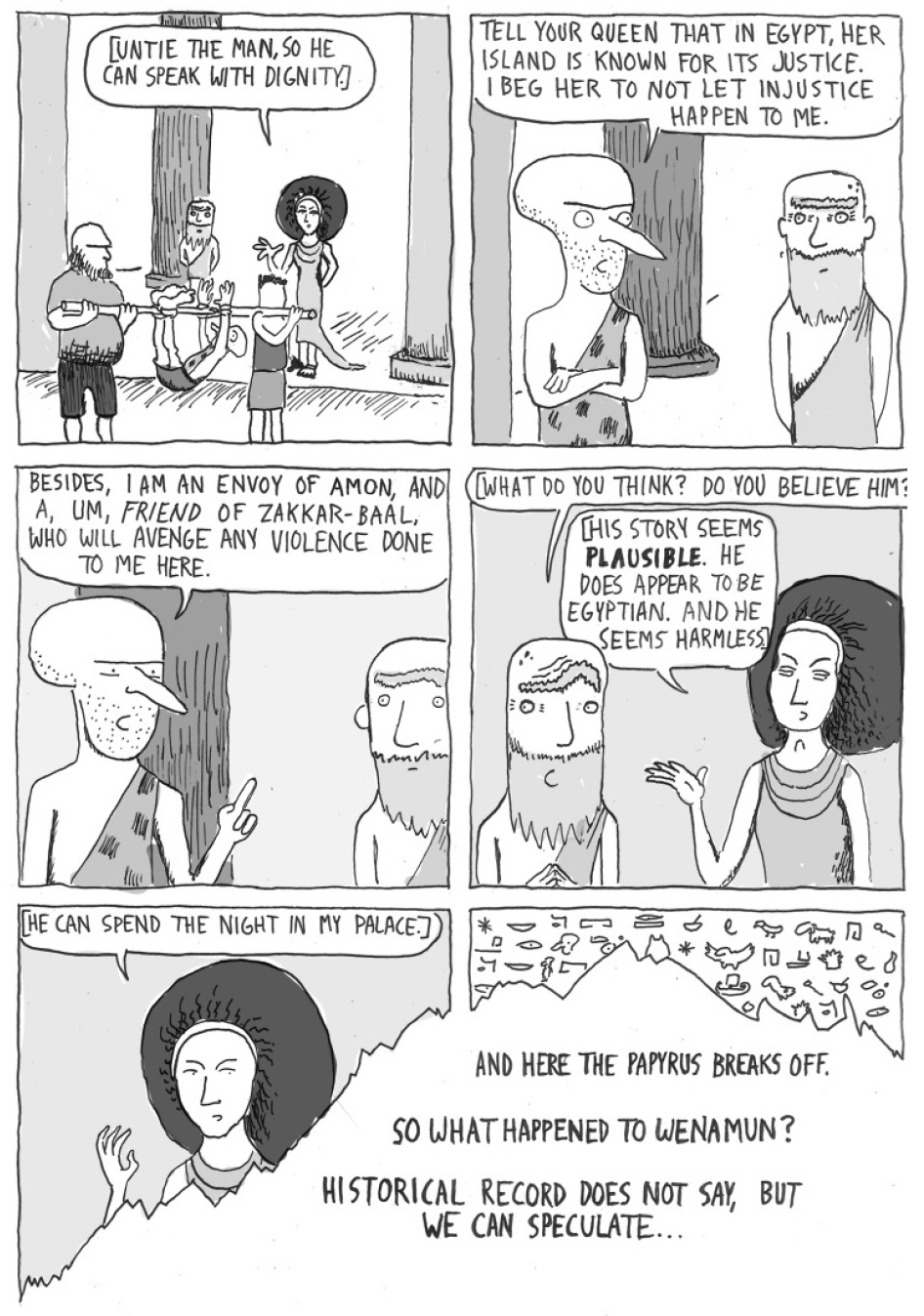
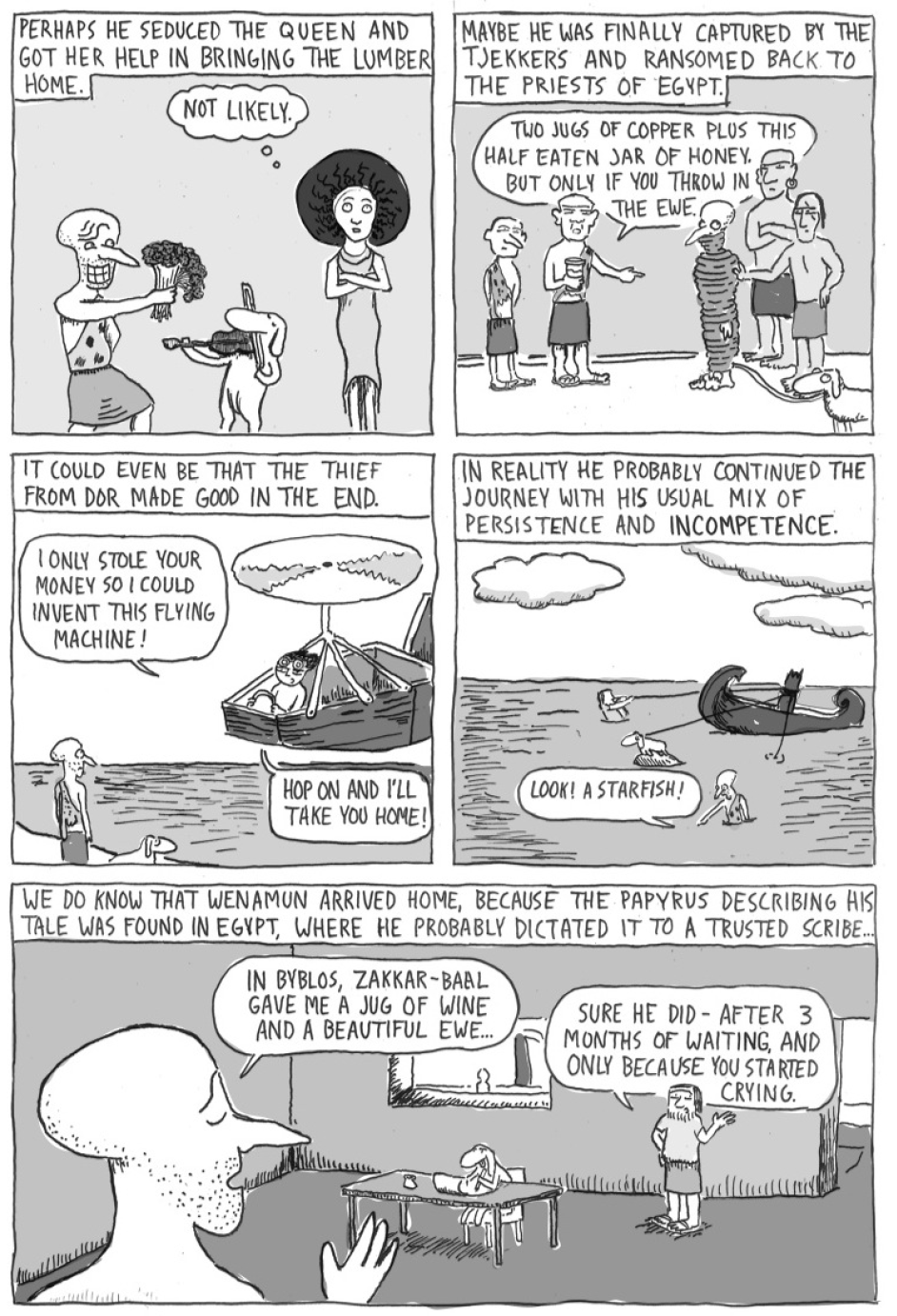
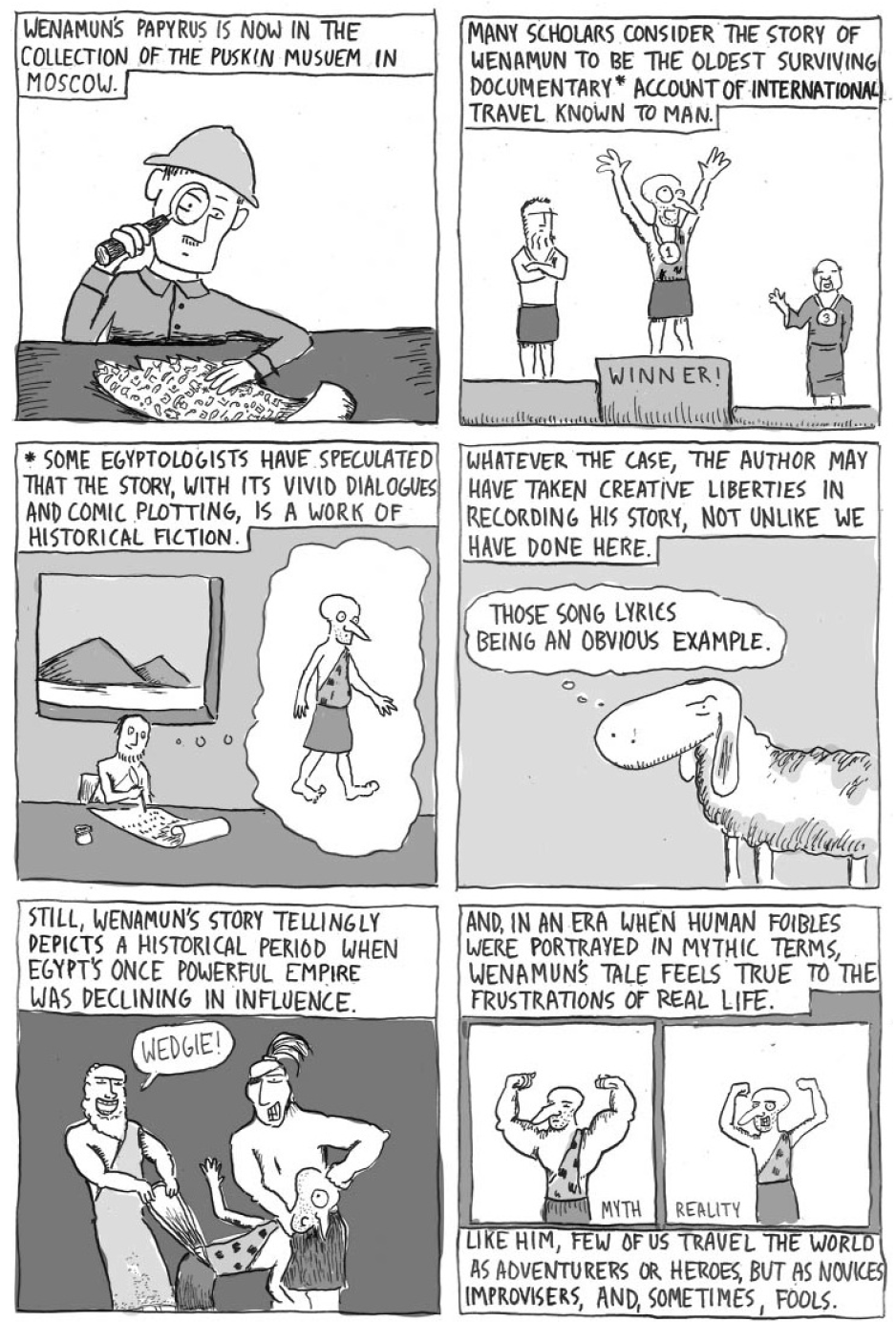
Rolf Potts has reported from more than sixty countries for the likes of National Geographic Traveler, The New Yorker, Slate.com, Outside, the New York Times Magazine, The Believer, The Guardian (U.K.), Sports Illustrated, National Public Radio, and the Travel Channel. His adventures have taken him across six continents, and include piloting a fishing boat 900 miles down the Laotian Mekong, hitchhiking across Eastern Europe, traversing Israel on foot, bicycling across Burma, driving a Land Rover across South America, and traveling around the world for six weeks with no luggage or bags of any kind.
Cedar Van Tassel attends Southeast of Saline School in north-central Kansas. He plays defensive end in football, trombone in concert band, and he specializes in literature and geography in Scholars Bowl. His web-comics blog, which has been mentioned in Huffington Post Comedy, can be found at ComicNuggets.com.
